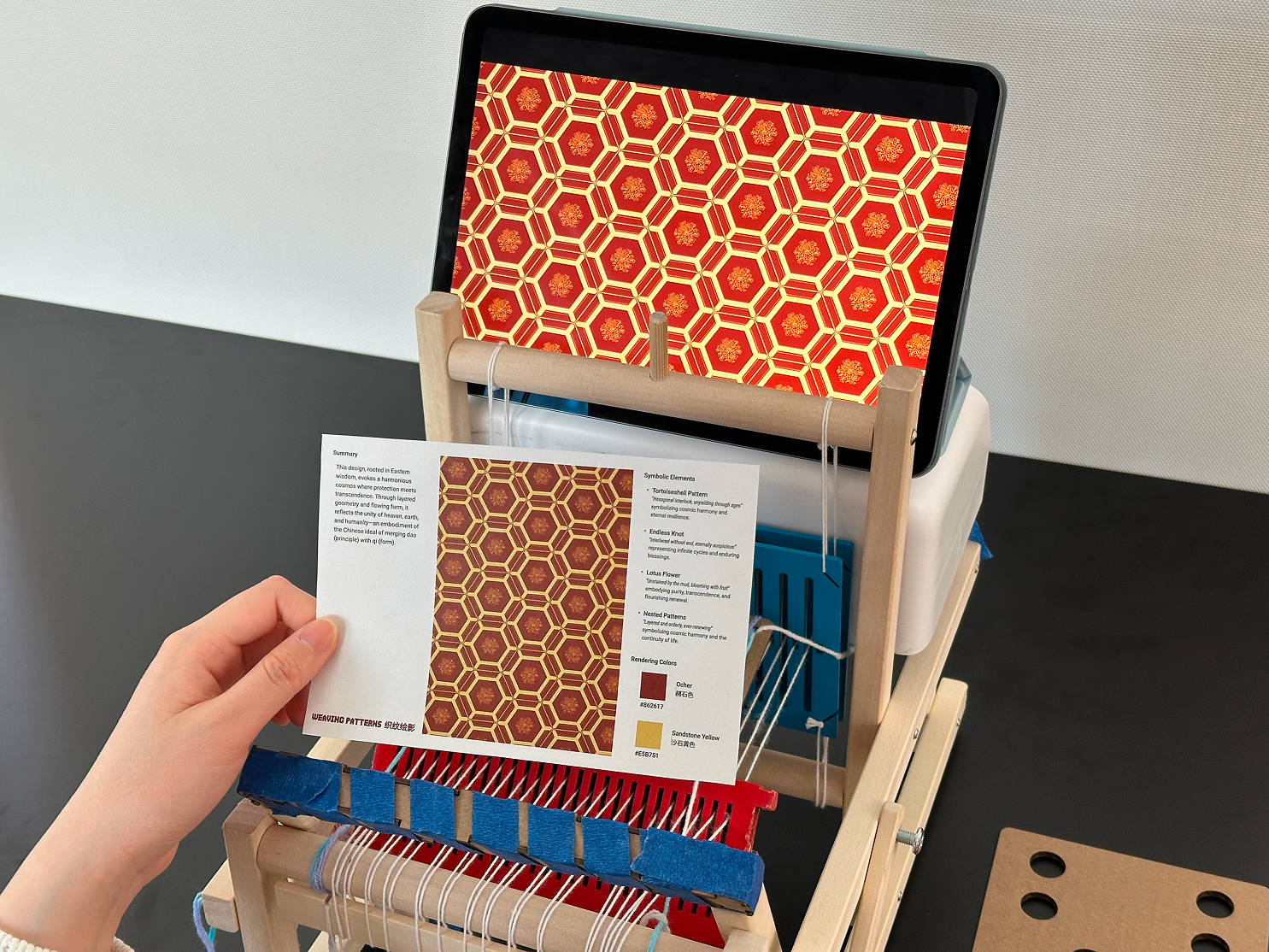Weaving Patterns
Samantha Cui
Advisor: Tiri Kananuruk
“Weaving Patterns” is an interactive table-top installation that blends weaving-like gestures with screen-based visuals, enabling visitors to uncover the hidden geometric beauty of traditional Chinese patterns while creating their own unique compositions.

Project Description
"Weaving Patterns" is an interactive table-top installation that merges weaving gestures with digital visuals, allowing visitors to discover the hidden geometric beauty of traditional Chinese patterns while creating their own unique compositions. By manipulating basic shapes, colors, and rhythmic repetitions, participants transform simple elements into artistic works imbued with profound cultural significance.
Traditional Chinese patterns are not merely decorative—they carry millennia of philosophical wisdom. For instance, the tortoiseshell pattern, composed of interconnected hexagons resembling a tortoise's carapace, symbolizes longevity and resilience, as turtles were considered auspicious creatures in ancient China. The "工"-shaped pattern, named after its resemblance to the Chinese character "工" (gōng), features strict horizontal and vertical arrangements representing order and stability, often seen in architecture and artifacts to reflect the traditional cosmology of "round heaven and square earth." These patterns follow deliberate symmetrical and cyclical arrangements that adhere to visual harmony while embodying the concept of "harmony between nature and humanity." Even their color schemes—using the five cardinal colors of blue, red, yellow, white, and black—correlate with the philosophy of Wu Xing (the Five Elements), where vermilion red signifies fortune and mineral blue represents tranquility, each combination encoding layers of cultural meaning.
In today's era of information overload, such pattern systems offer timeless wisdom in "simplicity governing complexity." Museums are no longer static displays of artifacts but dynamic spaces where interactive technology allows visitors to engage with the logic behind these designs—when users assemble "工"-shaped modules or reconstruct the fractal geometry of tortoiseshell patterns on screen, they are not just creating but deciphering ancient worldviews. This immersive experience reveals more intuitively than words ever could: why these traditional motifs continue to captivate across time.

Technical Details
This interactive system combines physical and digital interactions through an Arduino microcontroller that detects real-time adjustments of the geometric pieces via sensors (e.g., push buttons and reed switches). The data is transmitted to a p5.js visual engine through Web Serial API, synchronizing every physical movement with dynamic on-screen pattern generation. As users pull the lever to "weave," each action progressively constructs the composite design.
Upon completion, the system generates a QR code linking to a digital index card with:
(1) the finalized pattern
(2) its color palette
(3) an AI-generated analysis of its cultural symbolism—all rendered computationally in real-time.
-1024x575.jpg)
Research/Context
In our age of information overload, while traditional knowledge formats (like academic papers) prioritize precision, they often fail to inspire emotional connections. Museums, however, can foster profound engagement through immersive experiences.
This project redefines museum interactions by merging "learning through play" with "design that inspires, not just informs." Through interactive technology, it transforms intricate cultural symbols—like traditional Chinese geometric patterns—into tangible, dynamic narratives. As visitors physically deconstruct these designs, they uncover the "simplicity governing complexity" philosophy encoded within each motif, turning scholarly knowledge into visceral understanding.
